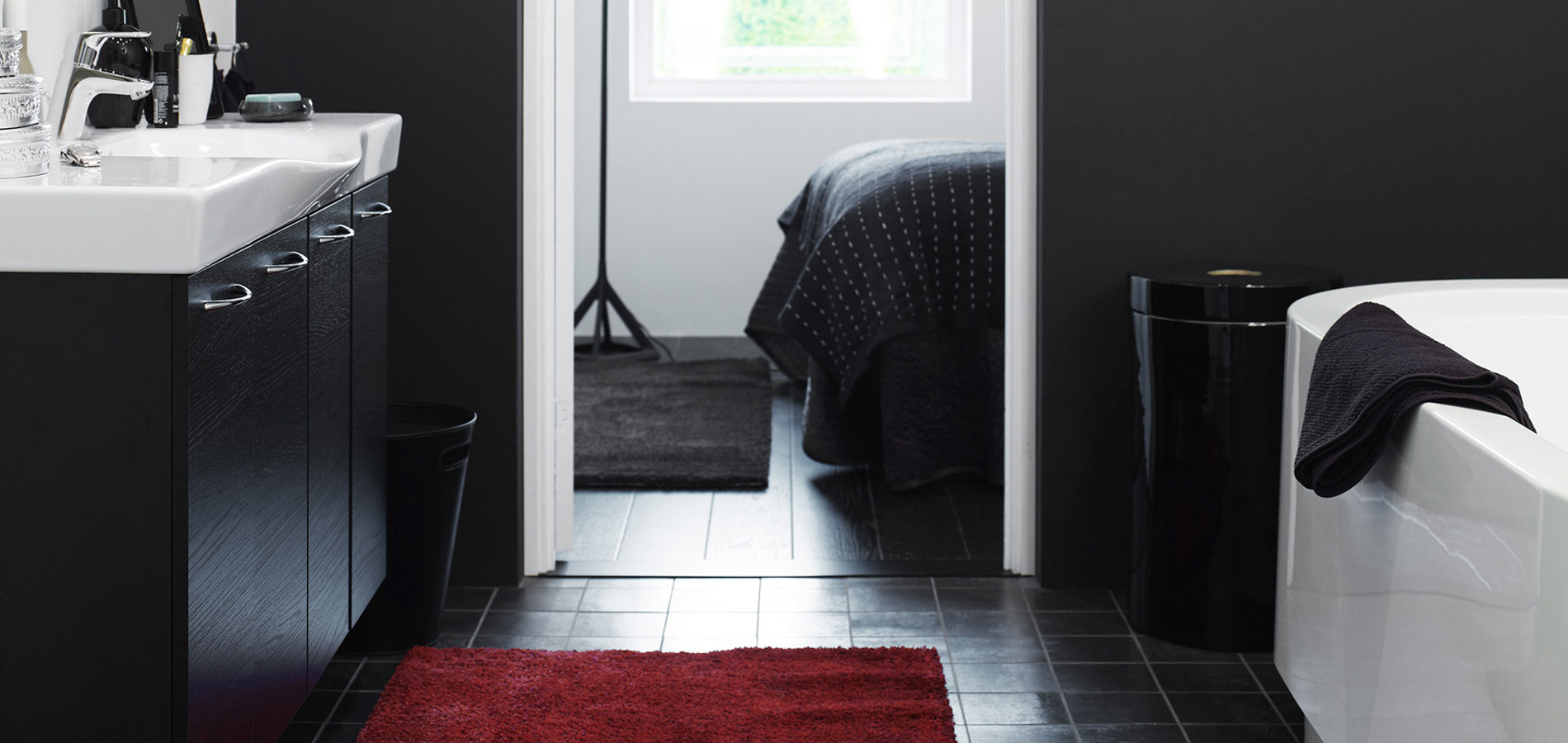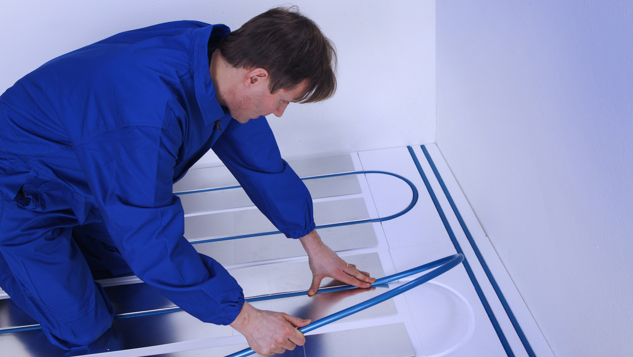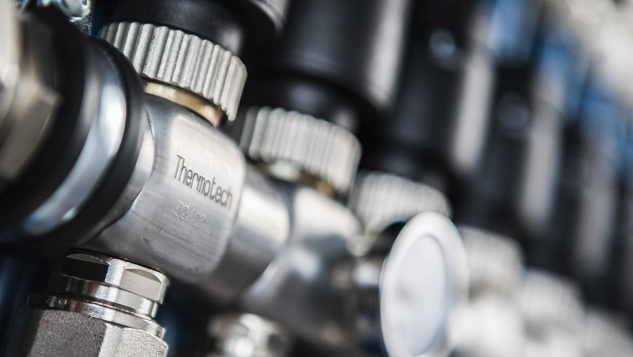Underfloor heating in bathroom

Image from: Vedum
Suitable installation systems in bathrooms
The most common installation system in wet rooms is concrete slab, which can be covered with tiles or wet room carpet. Depending on the size of the surface and available building height, 8, 12 or 17 mm pipes are chosen.
If the basis consists of floor joists, you can install grooved chipboards (Thermotech Wooden system) in the bathroom. As wet areas always require a fall against the floor drain, and thus a layer of leveling compound, a reinforcement of the joist layer is required by gluing a form-stable board above the grooved boards with underfloor heating for sufficient stability. See the respective instructions for detailed information. We recommend using moisture-resistant floor chipboards in quality V313-P5.
This construction can be experienced as complicated and time-consuming, and the grooved boards can be advantageously replaced with smooth chipboards and leveling compound.
When insulation is required, in order to avoid downward heat losses and to have the most energy-saving heating system possible, the installation system Floating floor is used, i.e. grooved panels in cellular plastic. Thermotech offers floating floors in several different thicknesses depending on the need for insulation. In bathrooms, there are often limitations in the available building height, and floating floors of 12 or 18 mm are normally used. For sufficient stability, a reinforcing mesh must be laid and a layer of fiber-reinforced leveling compound of at least 12 mm must be poured above the grooved cellular plastic sheets and underfloor heating before the floor is covered with tiles or wet room carpet.
Underfloor heating with low construction height
For underfloor heating with a low construction height, we recommend concrete slab with 8 or 12 mm pipes. If insulation is required, there is Floating floor 12, a system with grooved cellular plastic sheets for 12 mm pipes for surfaces up to approx. 9 sqm per loop.
The building height depends on the substrate and floor covering. Floating floor 12 gives a construction height of approx. 13 mm. To this must be added the thickness of the upper floor. Inlay can be at least 21 mm thin (plus surface layer).
Requirements for waterproofing in bathrooms
In wet rooms, a necessary waterproofing layer is always required. We recommend to hire a professional.
Waterborne underfloor heating in the bathroom only
In cases where the home has a waterborne heating system with radiators on other surfaces, waterborne underfloor heating can be installed in the bathroom using a mixing unit. The function of the mixing unit is to mix in and regulate the temperature of the hot water, which comes from the heat source, in the water circulating in the underfloor heating system so that the appropriate temperature is achieved.
Thermotech's mixing units suitable for smaller areas are:
Mixing unit TMix XS – for areas up to 16 sqm
Mixing unit TMix S – for areas up to 60 sqm
Heated floor in the bathroom in summer
Thermotech's mixing unit TMix XS can be equipped with a 350W electric cartridge that provides a comfortable floor temperature on the floor surface when the primary heat source is turned off, usually in summer. Mixing unit TMix S and Integral can also be equipped with an electric cartridge.
Thermotech's mixing unit TMix XS is available with different electric cartridge packages depending on needs, but for best comfort, the package with wireless regulation and function for easy switching between summer and winter operation is used.
Waterborne or electric underfloor heating in the bathroom
The advantage of water-borne heating is that you can connect the heating system to different heat sources such as a heat pump, pellet boiler or solar heating. You can't do that with direct-acting electricity. Energy prices and rules around direct electricity are also in the hands of the future energy politicians, which can be perceived as an uncertainty.
In the past, water-borne underfloor heating had two disadvantages compared to electric underfloor heating - on the one hand, water-borne underfloor heating built up more and on the other hand the floor became cold when the regular heat source (e.g. the heat pump) was switched off. Waterborne underfloor heating is now available with basically the same low building height as electric underfloor heating. Completed with Thermotech's mixing unit TMix XS with 350 W electric cartridge, the floor never needs to get cold either. When the regular heat source is switched off, the electric cartridge kicks in and heats the floor. During most of the year, however, the heat from the ordinary heat source is used to heat the floor. The same comfort, summer and winter, but at a lower cost than with electric underfloor heating that draws electricity all year round. If you are unsure, always contact a professional for assessment and advice before you start.

